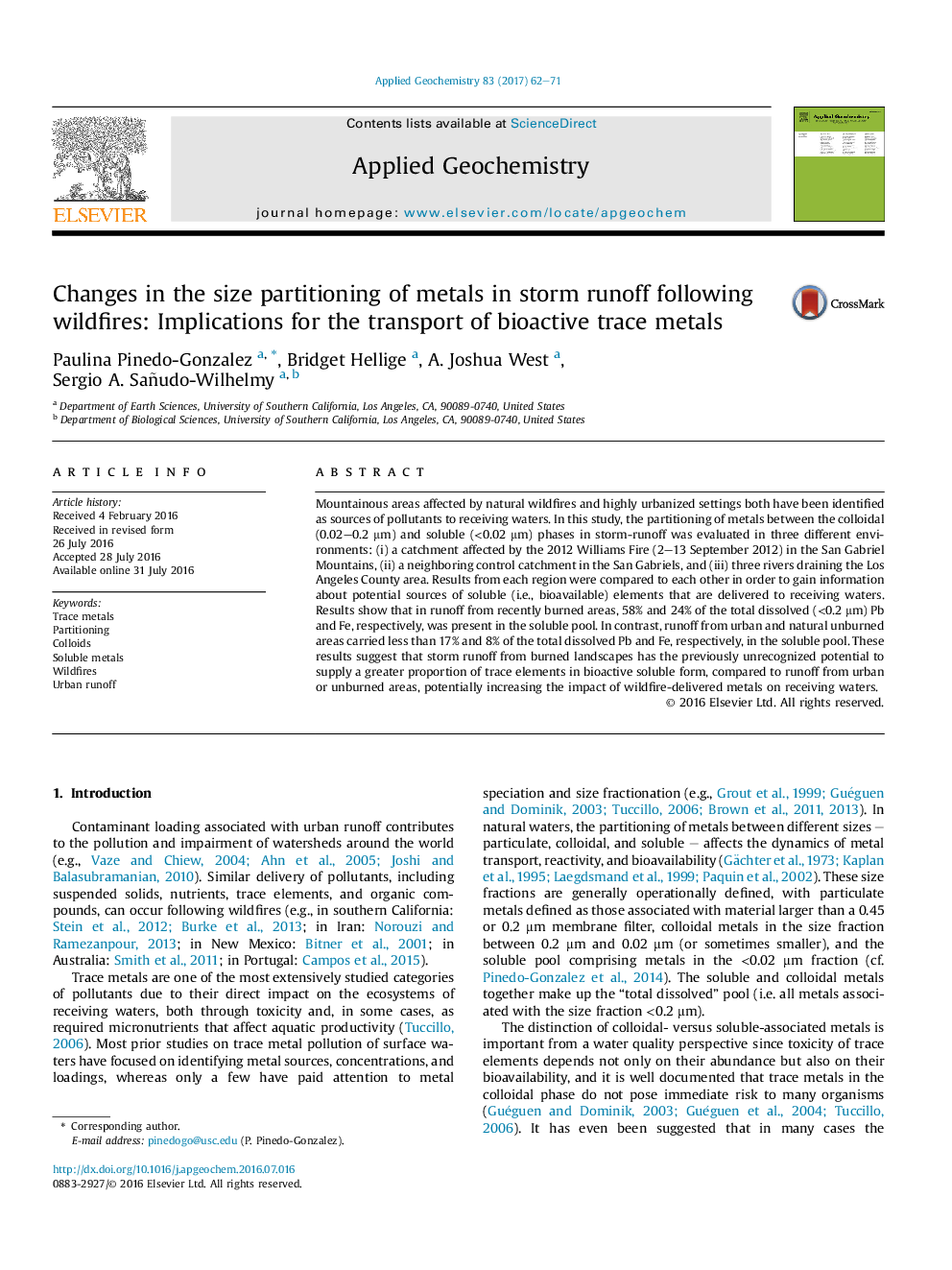| Article ID | Journal | Published Year | Pages | File Type |
|---|---|---|---|---|
| 5752550 | Applied Geochemistry | 2017 | 10 Pages |
â¢Wildfires increase the mobility of some trace metals.â¢Different size partitioning of trace metals between burned and urban landscapes.â¢Runoff from burned landscapes supply trace metals in bioactive soluble form.
Mountainous areas affected by natural wildfires and highly urbanized settings both have been identified as sources of pollutants to receiving waters. In this study, the partitioning of metals between the colloidal (0.02-0.2 μm) and soluble (<0.02 μm) phases in storm-runoff was evaluated in three different environments: (i) a catchment affected by the 2012 Williams Fire (2-13 September 2012) in the San Gabriel Mountains, (ii) a neighboring control catchment in the San Gabriels, and (iii) three rivers draining the Los Angeles County area. Results from each region were compared to each other in order to gain information about potential sources of soluble (i.e., bioavailable) elements that are delivered to receiving waters. Results show that in runoff from recently burned areas, 58% and 24% of the total dissolved (<0.2 μm) Pb and Fe, respectively, was present in the soluble pool. In contrast, runoff from urban and natural unburned areas carried less than 17% and 8% of the total dissolved Pb and Fe, respectively, in the soluble pool. These results suggest that storm runoff from burned landscapes has the previously unrecognized potential to supply a greater proportion of trace elements in bioactive soluble form, compared to runoff from urban or unburned areas, potentially increasing the impact of wildfire-delivered metals on receiving waters.
